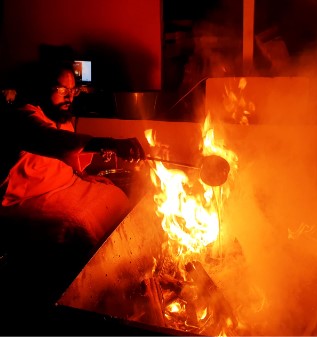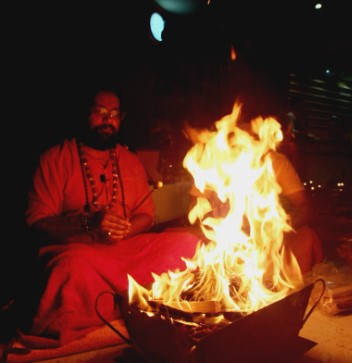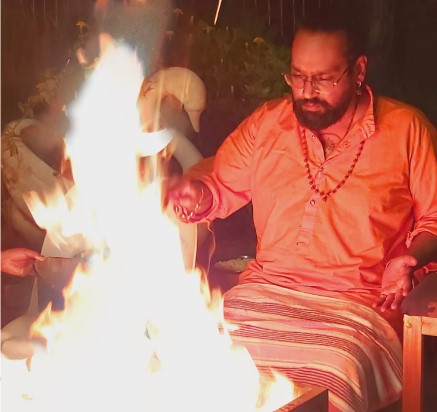WHAT IS A HOMA?
Homa is a sacred fire ritual that is an integral part of Sanatana Dharma as well as other Dharmic traditions like Buddhism and Jainism. The practice involves offering various sacred substances into a consecrated fire while chanting mantras and hymns.
Components of a Homa
- Agni (Fire): Represents the divine messenger that carries offerings to the gods.
- Samagri (Offerings): Includes ghee, grains, herbs, and sacred wood.
- Mantras and Hymns: Vedic chants are recited to invoke divine energies.
- Kund (Fire Pit): A specially constructed pit or altar where the fire is lit.
- Priests and Participants: Qualified priests conduct the ritual, but participants also play a role.
Importance of Homa
- Spiritual Purification: Cleanses participants and the environment of negative energies.
- Connection with the Divine: A bridge between the human and divine.
- Fulfillment of Desires: Brings blessings for health, prosperity, and peace.
- Community Bonding: Brings people together for spiritual upliftment.
Benefits of Homa
- Mental & Emotional Well-being: Mantra chanting induces peace and reduces stress.
- Physical Health: The herbs purify the air and improve health.
- Spiritual Growth: Enhances devotion and connection to higher consciousness.
- Environmental Benefits: Neutralizes pollutants and increases positive energies.
Homa in Modern Times
Today, Homas are performed in homes, temples, corporate settings, and global spiritual gatherings. Scientific studies are also exploring their effects on air quality, psychology, and holistic well-being.


